Jiangxi Province
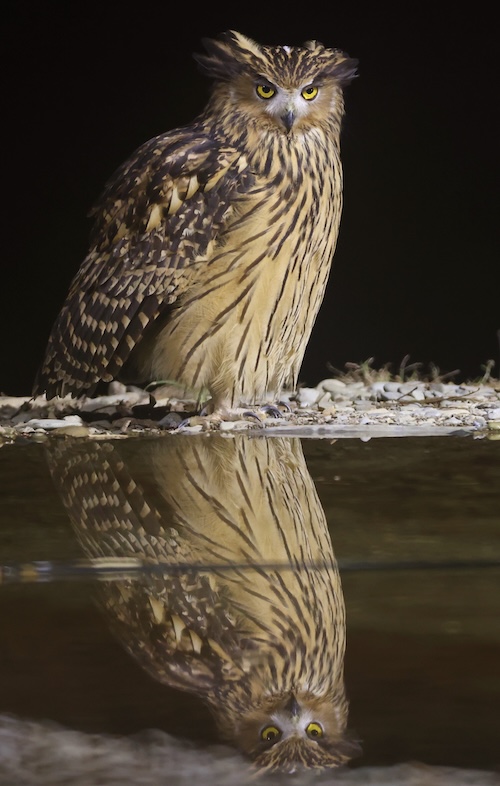
Jiangxi is an inland province in East China covering an area of 166,919 km2 (64,448 square miles) with a population of over 45 million people. Spanning from the banks of the Yangtze River in the north into hillier areas in the south and east, it shares a border with Anhui to the north, Zhejiang to the northeast, Fujian to the east, Guangdong to the south, Hunan to the west, and Hubei to the northwest. Major cities include its capital and largest city Nanchang with a population of c.2.5 million, closely followed by Ganzhou and Jiujiang. The southern half of Jiangxi is hilly and mountainous, with ranges and valleys interspersed; notable mountains and mountain ranges include Mount Lu, the Jinggang Mountains and Mount Sanqing. The northern half is comparatively lower in altitude. The Gan River flows through the province.
Although the majority of Jiangxi’s population is Han Chinese, Jiangxi is linguistically diverse. It is considered the centre of Gan Chinese; Hakka Chinese is also spoken to some degree. Jiangxi is rich in mineral resources, leading the provinces of China in deposits of copper, tungsten, gold, silver, uranium, thorium, tantalum, niobium and lithium.
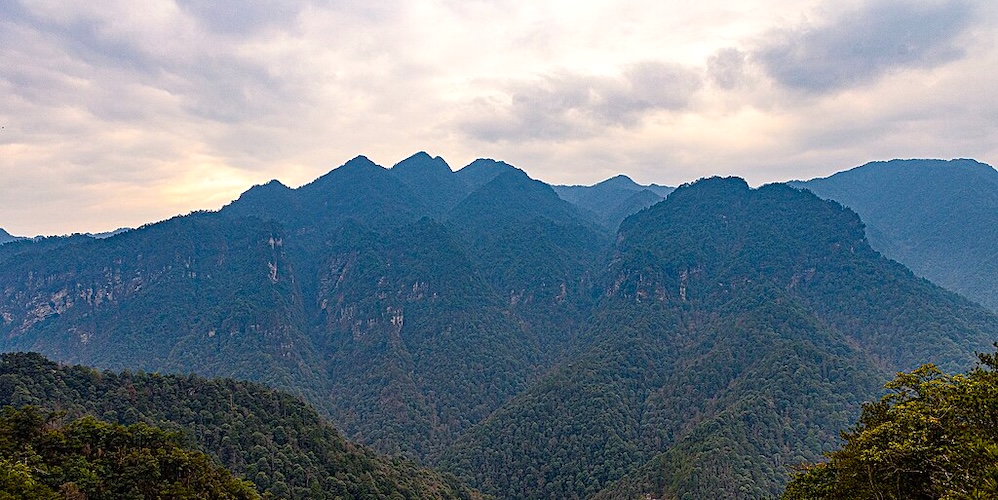
Jinggang Mountains – ©N509FZ CC BY-SA 4.0 via Wikimedia Commons
The mountainous terrain and large forest coverage of Jiangxi has made it historically one of the wilder places of central China. South China tigers have been seen as recently as fifteen or twenty years ago and projects are underway to document evidence of existing tigers, if there are any. Several mountain areas along the northern border with Hunan and Hubei are potential sites for wilderness preserves specifically for protecting or even reintroducing tigers. Other wildlife, though not plentiful, are more numerous in Jiangxi than in many other developed areas of China.
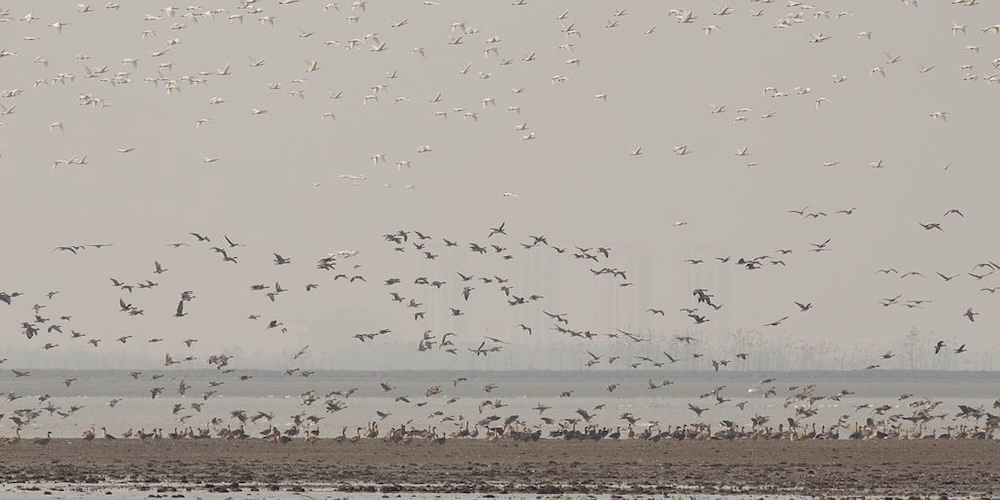
Massed Birds at Poyang Lake – ©Alastair Rae CC BY-SA 2.0 via Wikimedia Commons
Numerous species of birds are common, especially around the marshes of Lake Poyang in the north. Though protected, mammals such as muntjac, wild boar, civet cats, and pangolins, are still common enough that they’ll even occasionally be seen in markets for sale as game meat, or possibly even in a forest.
Birding Jiangxi
Jiangxi has an excellent natural environment with 60% forest cover. There are numerous rivers of different sizes most of which flow into Poyang Lake – the largest freshwater lake in China. Various landscapes provide birds with ideal habitats for the more than 500 bird species that have been recorded in the province. Poyang Lake is one of the largest wintering habitats for migratory birds from Siberia while Suichuan County has one of the three most important migrating passageways.
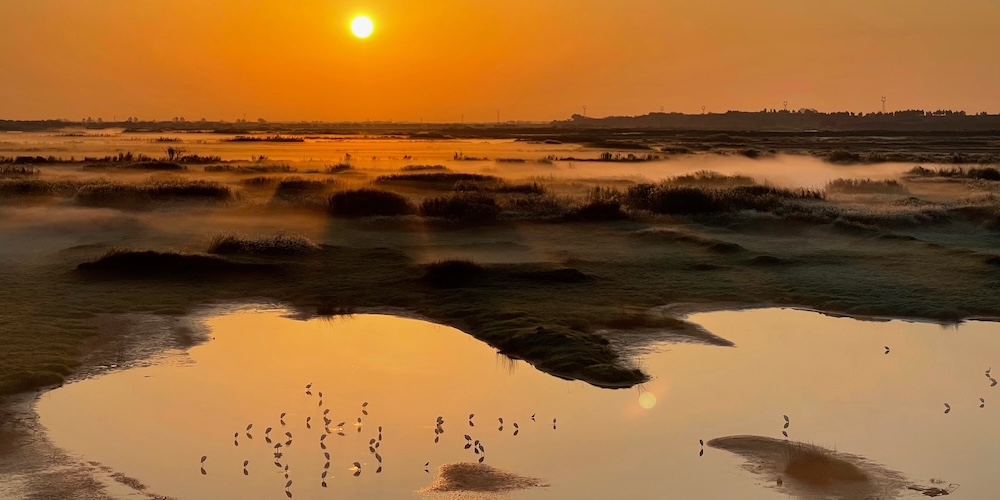
Located in the northeast of Poyang Lake, in Yongxiu County, is formed by nine interconnecting lakes of different sizes. The reserve was established four decades ago and is a Ramsar Wetland of International Important. Covering 22,400 hectares, the reserve is the main wintering habitat for Siberian Cranes accommodating 95% of the total world population. The reserve has recorded over 310 bird species of which c.160 are typical wetland species. The best birding season of Poyang Lake is from October to March. Other target birds include: White-naped Crane, Hooded Crane, Baer’s Pochard, Black Stork, Swan Goose, Taiga & Tundra Bean Geese, Ruddy Shelduck, Falcated Duck, Brown Crake, Rufous Turtle Dove, Eastern Marsh Harrier, White-throated Kingfisher, Pied Kingfisher, Yellow-bellied Tit, Chinese Penduline Tit, Yellow-bellied Prinia, Plain Prinia, Black-collared & White-cheeked Starlings, Grey-backed Thrush, Yellow-billed Grosbeak, Water Pipit, Black-faced & Little Buntings, etc.
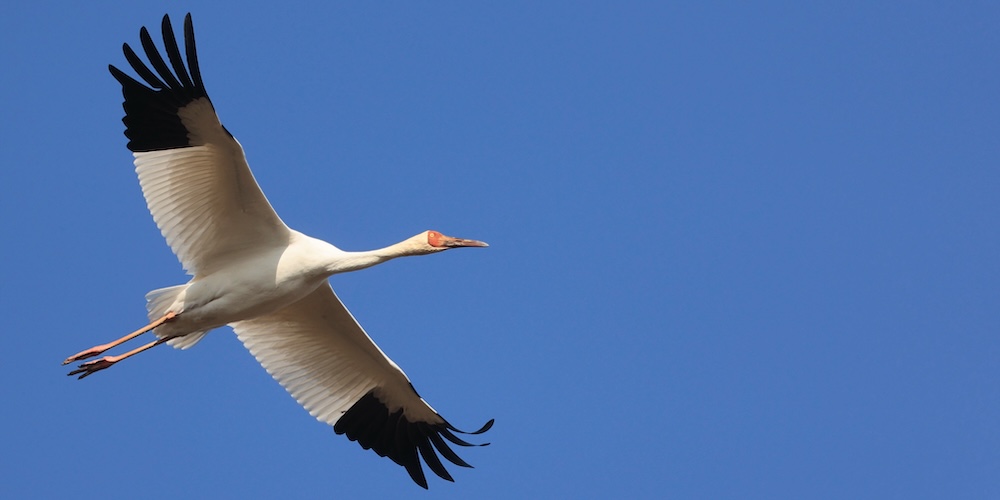
Siberian Crane Leucogeranus leucogeranus – ©Bird-Photo-Tours ASIA
Located in northeast of Jiangxi, Wuyuan is well-known as the most beautiful countryside of China. Most of its territory is covered by forest which accounts for 82%. Wuyuan is the home for the world critically endangered species Yellow-throated Laughingthrush Garrulax galbanus which only exist in two places in China. Wuyuan has recorded 300 bird species. As well as the Yellow-throated Laughingthrush, Pied Falconet Microhierax melanoleucos are also top targets. Others include: Chinese Bamboo-Partridge, Scaly-sided Merganser, Long-billed Plover, Eastern Spot-billed Duck, Chinese Sparrowhawk, Crested Goshawks, Dollarbird, Great Barbet, Grey Treepie, Collared Finchbill, Grey-headed, Vinous-throated & Short-tailed Parrotbills, Streak-breasted & Grey-sided Scimitar-Babblers, Huet’s Fulvetta, Masked, Lesser Necklaced & Greater Necklaced Laughingthrushes, Black-collared Starling, White-rumped Munia, Crested & Pied Kingfishers, White-crowned Forktail, Plumbeous Redstart and Brown Dipper, etc.
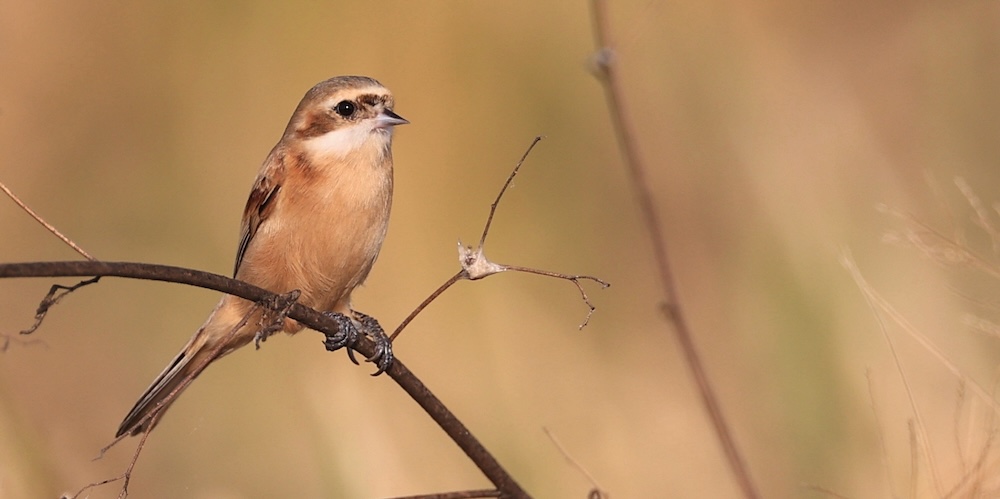
Chinese Penduline Tit Remiz consobrinus – ©Bird-Photo-Tours ASIA
Suichuan county has an important migration route. The flyway is 40 kilometres-wide, 30 kilometres-long valley surrounded by mountains over 2,000 meters above the sea level. During migrating seasons in May and September, there is an air stream passing the valley that migratory birds can use to fly over. Every year there are more than 100 thousand migratory birds of 180 species passing through here. It is also inhabited by some rare Chinese endemics, including Elliot’s Pheasants Syrmaticus ellioti and Cabot’s Tragopan Tragopan caboti. Other specials include Great & Chinese Barbets, Grey-chinned Minivet, Grey Treepie, Yellow-cheeked Tit, Chestnut Bulbul, Dusky & Huet’s Fulvettas, Red-billed Leiothrix, White-crowned Forktail and Black-faced Bunting.
-
NNR Poyang Lake
InformationSatellite ViewPoyang Hu is a huge area of flooded land north of the city of Nanchang. A wintering ground for tens of thousands of duck, geese and cranes. Probably the best and most reliable site in the world for Siberian Crane, with Hooded, White-naped and Red-crowned as a supporting cast. Also great for Oriental Stork, Black-faced Spoonbill and Swan Goose. Mid-November through to early March. (Fog can be a real problem!)
-
Philip He
Alpine Birding
http://www.alpinebirding.com -
Wikipedia
GNU Free Documentation License
https://en.wikipedia.org/wiki/Jiangxi
-
Number of bird species: 536
(As at May 2025)
-
Avibase
PDF ChercklistThis checklist includes all bird species found in Jiangxi , based on the best information available at this time. It is based on a wide variety of sources that I collated over many years. I am pleased to offer these checklists as a service to birdwatchers. If you find any error, please do not hesitate to report them. -
E-Bird
PDF ChercklistThis checklist is generated with data from eBird (ebird.org), a global database of bird sightings from birders like you. If you enjoy this checklist, please consider contributing your sightings to eBird. It is 100% free to take part, and your observations will help support birders, researchers, and conservationists worldwide. -
ProQuest
Scientific PaperAn Updated Checklist of the Birds of Jiangxi, China
-
Birding South East China
| By Tim J Woodward | Tim Woodward | 2006 Paperback | 423 pages, 88 colour photos, 160 maps | ISBN: 9789628508426 Buy this book from NHBS.com -
Birds of China
| By Liu Yang & Chen Shuihua | Princeton University Press | 2023 | Flexibound | 672 pages, plates with 4000 colour illustrations, colour distribution maps | ISBN: 9780691237527 Buy this book from NHBS.com -
Guide to the Birds of China
| By John MacKinnon | OUP | 2022 | Edition 2 | Paperback | 513 pages, 164 plates with colour illustrations; colour distribution maps | ISBN: 9780192893673 Buy this book from NHBS.com -
HKBWS Field Guide to the Birds of Hong Kong and South China [English / Chinese]
| By Hong Kong Birdwatching Society | HKBS | 2022 | Edition 9 | Paperback | 372 pages, plates with colour illustrations | ISBN: 9789627508342 Buy this book from NHBS.com
-
Poyang Lake
Facebook Page
-
NNR Jinggang
InformationSatellite ViewThe range's massif consists of a number of thickly forested parallel ridges. On the heights there is not much farmland with most settlements at the base of the mountains. -
NNR Lushan
WebpageSatellite ViewLocated in the south of Jiujiang City, north of Jiangxi Province, Lushan Nature Reserve covers a total area of 30,466 hectares. The highest peak of Lushan Mountain is 1,474 meters above sea level. Its main protection targets are forest ecosystem, cultural heritages, glacier features and natural landscape. More than 40 species of plants found here are either rare or local special species including Katsura tree, Manglietia fordiana, Chinese tulip and eucommia. Animals under the state protection are leopard, giant salamander, civet, python, pangolin, Hydropotes inermis, muntjac, silver pheasant, white crane, mandarin duck and so on. In addition, there are 26 ancient glacier heritages such as cirque, icehouse and deep valleys. In December1996, the Lushan Reserve was listed as World Nature Heritage. -
NNR Poyang Lake
InformationSatellite ViewThere is an integrated wetland ecosystem structure in the reserve and the biodiversity is abundant, with 45 species of mammals, 310 species of birds, 48 species of reptiles, 136 species of fish, 227 species of insects, etc. The highest number of the Siberian Cranes wintering in the reserve is more than 4,000, accounting for 98 % of the global number. And more than 80 % of the global Oriental White Storks and 70 % of the global White-naped Cranes winter in the reserve. It is also the wintering site for the largest population of the Swan Geese in the world (the highest number is more than 60,000) and the Tundra Swans in China (the highest number is more than 80,000). Meanwhile, it is important flyway and stopover site for a large number of rare and endangered migrants. -
NNR Wuyishan
InformationSatellite ViewThe Wuyi Mountain stretches for thousands of miles like a green dragon all the way across the provinces of Fujian, Zhejiang, Jiangxi and Guangdong. The world-famous Wuyishan National Key Nature Reserve just sits on the highest section on the north of the Mountains. It is the single biggest and the most comprehensive surviving semi-subtropical forest system in the south-east mainland China. It is within the World biosphere Protection Network of the United Nations and is ranked Class-A global nature reserve…
-
eBird
SightingseBirding This Month
-
Alpine Birding
Local Tour OperatorBirding trips here are made for avid birders including yearly-run trips and new China birding trips developed by AlpineBirding team and guided by our bird experts in the best -
Bird Photo Tours ASIA
Tour OperatorBird-Photo-Tours Asia has selected three of the most important wintering grounds in China for cranes namely Jiangsu Province, Jiangxi Province and Yunnan Province and our main target will be to obtain portraits of all six crane species. -
BirdQuest
Tour OperatorEASTERN CHINA – In pursuit of specialities from South China northwards to the Manchurian steppe -
Birdtour Asia
Tour Operator...Morning travelling through to Nanchang, and onto Poyang Lake for afternoon birding. Poyang is renowned for it's density of wintering waterbirds, and is the sole wintering area now for Siberian Crane. This is not our only target however, as Hooded and White-naped Cranes also winter here, along... -
China Birding Tour
Local Tour OperatorWe are based in eastern China, We focus on small private/customized tours which are flexible, high yields’ and good quality We value each of our guest and we work for your smile. -
Gifting Owl
Local Guided TourFull Day Birding Tour at Wucheng Poyang Lake Nature Reserve Private -
Holiday China Tour
Local Tour Operator6 Days China Bird-Watching and Wuyuan Photo Tour -
Housity
Local Guided TourNanchang City Highlights & Bird Watching Private Tour -
Pelago
Local Guided TourBird Watching Tour at Nanji Hill Poyang Lake Nature Reserve From Nanchang -
Summer Wong China Bird Tours
Local Tour Operator...Morning birding in Northern Poyang Lake, then head to Dongzhai, 420km, 5.5 hours drive, afternoon birding in Dongzhai if time allowed, night in Dongzhai... -
WINGS
Tour OperatorChina: The South in Winter -
Zoothera
Tour Operator...Moving on to Poyang Hu with its wintering population of Siberian and White-naped Cranes, there are usually small numbers of Hooded Cranes here and we’ll be on the lookout for the critically endangered Oriental Stork as well...
-
2023 [12 December] - Anders Bacher Nielsen
PDF ReportBird list for the day (selected): Cabot’s Tragopan, Silver and Elliot’s Pheasants, Tristam’s bunting, Pallas’ Leaf Warbler, Indochinese Yuhina, Buffy Laughingthrush, Streak-breasted Scimitar-Babbler, Eurasian Jay, Red-billed Blue Magpie, White’s Thrush (5 birds), Slaty-backed and White-crowned Forktail. -
2025 [01 January] - Nigel Adlam
PDF Report...That afternoon, we drove south past Wuhan – where the wet market at the epicentre of the covid-19 pandemic has been demolished and enclosed in a large concrete wall – to Jiujiang where we were treated to a magnificent sight of at least 120 Baer’s Pochards. Not bad for one of the world’s rarest ducks... -
2025 [03 March] - Joshua Bergmark
PDF ReportWe awoke the next day at Nanchang after our evening flight south, and headed to Poyang Lake. We didn’t see much for a few hours as the thick fog stubbornly refused to lift, but eventually everything started happening... -
2025 [03 March] - Summer Wong
ReportBirding spots on this winter eastern China tour: Shanghai, Wuyuan, Poyang Lake, Dongzhai, Emei Feng, Mingxi, Sanming, Fuzhou -
2025 [03 March] - Summer Wong
ReportEndemics ( 10 species), breeding endemics, near endemics and highlight birds we had seen on 2–21 Mar 2025 Winter Eastern China: Cabot’s Tragopan (E), Reeves’s Pheasant (E), Silver Pheasant, Koklass Pheasant, Elliot’s Pheasant (E), White-necklaced Partridge (E, heard only), Hainan Peacock Pheasant (E), Hainan Partridge...



